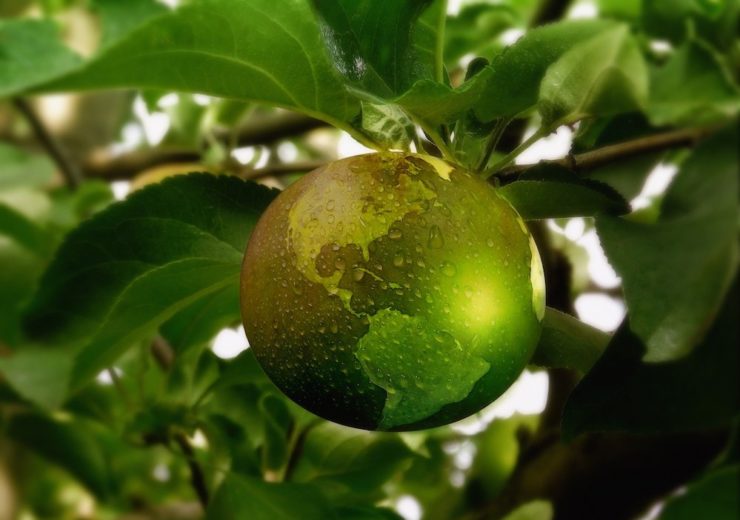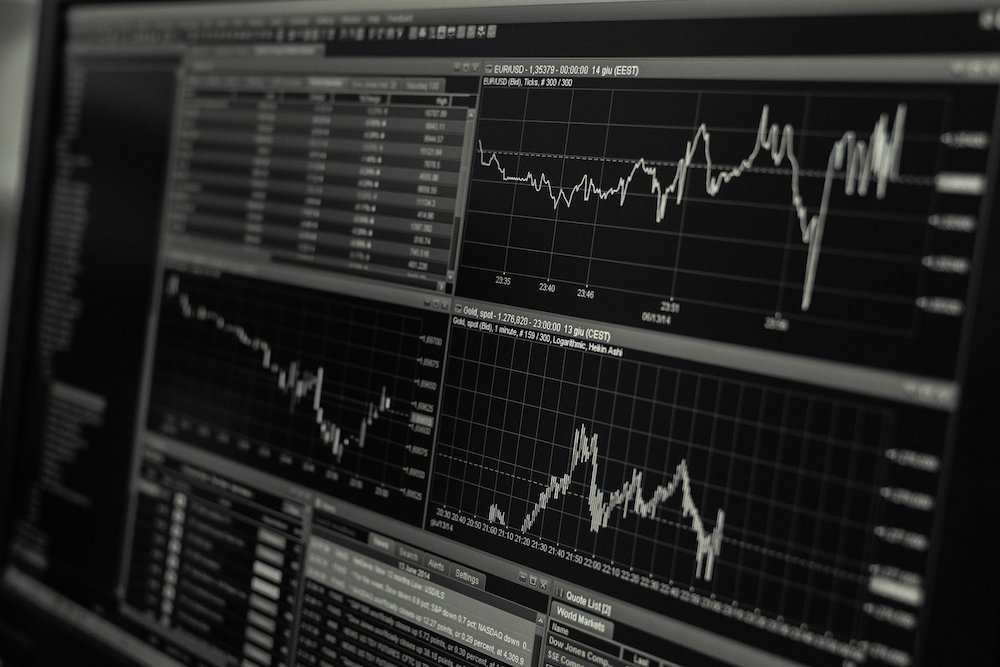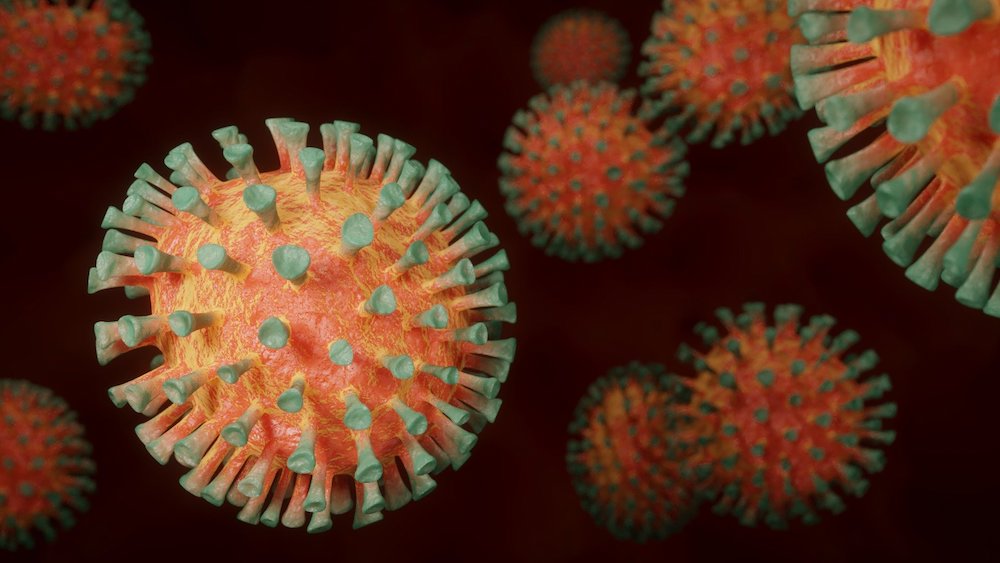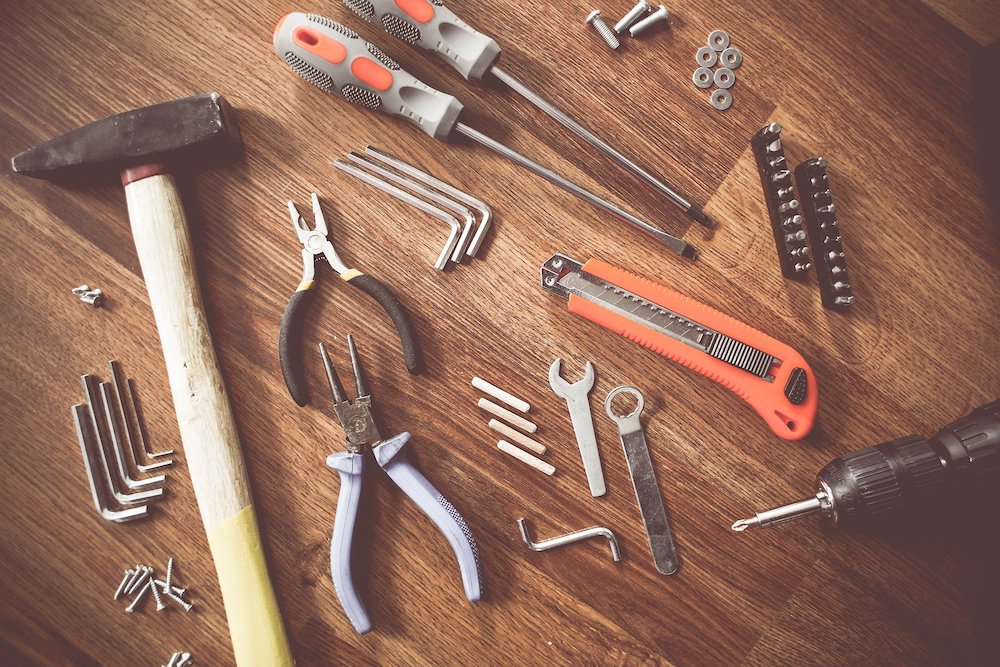In a statement towards the end of June, the BIR said the waste management sector could lose $200bn in earnings from sales hit by Covid-19

Many organisations have called for a sustainable 'Green Recovery' from the Covid-19 pandemic (Credit: Pixabay)
In a June statement, the Bureau of International Recycling said shutdowns and temporary stops due to Covid-19 could lead to an overall industry production loss as high as 40%. Thomas Parker looks at the impact the virus has had on the sector, and, with talk of a “Green Recovery” post-pandemic, whether or not the crisis will provide an opportunity to improve the waste management business.
In August 1955, LIFE magazine published an article titled “Throwaway Living”, which encouraged the use of disposable items to help cut down on household chores.
Hailing how the products are “all meant to be thrown away after use”, the piece has since been used to highlight the “throwaway society” of waste.
According to a 2017 study by US-based scientists, since the 1950s 6.3 billion metric tonnes of plastic have become waste.
Material recovery facilities (MRFs), which have been around since the 19th century, have been predominantly tasked with taking and recycling most of this.
However, due to a range of issues — including materials being non-recyclable or contaminated — a large proportion of waste is still sent to landfill or incinerated, both contributing to greenhouse emissions.
According to the World Bank, 37% of waste was disposed of through some form of landfilling in 2016. That same year, recycling made up 13.5% of waste disposal.
In recent years, organisations such as the Ellen MacArthur Foundation have brought together businesses to improve recycling through the circular economy — a system where materials are designed to be reused
Commitments by major corporations including Coca-Cola, Unilever, and Mondelez to use more recycled materials have also highlighted businesses focusing on the issue.
Due to temporary MRF closures and the suspension of some collection schemes, Covid-19 has obstructed the road towards improved recycling.
The sector’s global body the Bureau of International Recycling (BIR) predicts the pandemic could lead to an overall industry production loss of up to 40%.
In recent weeks, CEOs of companies such as Coca-Cola, Unilever, Amcor, and DS Smith have reaffirmed their commitment to creating a circular economy through their post-Covid-19 plans.
The system has also been highlighted during discussions of a sustainable “Green Recovery”.
To “Build Back Better” post-pandemic, packaging consultant Mike Ferrari believes there needs to be a “disruption” in the way waste is managed.
“What we need is a disruption, not an incremental change, we need a true disruption into how we handle municipal solid waste (MSW)”, he explains
“We can’t think small on this because this is how we got where we are.”
What the recycled plastics market looked like in recent years?
In October 2018, the Ellen MacArthur Foundation’s New Plastics Economy group launched the Global Commitment, set up to eradicate plastic pollution at its source.
Initially signed by 250 organisations including L’Oreal, Unilever, and Amcor, it committed businesses to ensure 100% of plastic packaging can be easily and safely reused, recycled, or composted by 2025.
Signatories have also pledged to circulate the plastic they produce by increasing the amount of material reused or recycled and made into new products.
Since its launch, the New Plastics Economy Global Commitment has welcomed more than 400 signatories.
Alongside this, brands including Coca-Cola and Nestle have made their own pledges around recycled content.
Nestle has said it will use 50% recycled content in its water bottles by 2025, while Coca-Cola is looking to do the same across its entire product range by the same year.
These targets have been described as “quite ambitious” by Mark Victory, Independent Commodity Intelligence Services’ (ICIS) senior recycling editor.
According to the European Food Safety Authority, 95% of recycled plastic for food contact packaging has to have originated from a food contact source.
Victory explains: “This is generally easy to reach for something like recycled PET (rPET) because most of the sources are from used plastic drinks bottles.
“If you look, however, at other polymers that are typically used for a wide variety of products, including things like household goods such as bleaches or cosmetics, they’re not food contact materials.
“This makes it very difficult to separate out once it goes through the sorting stage, and sets a hard limit on the amount of post-consumer material suitable for reprocessing into recycled food-grade pellets.
“With rPET, there’s around 300,000 tonnes of food-grade reprocessing capacity at the moment, compared to around two million tonnes of post-consumer PET waste collection.”

Limitations on the amount of food-grade packaging, when compared to demand, has seen the gap in cost between recycled and virgin PET widen.
Victory says: “The price of rPET pellets peaked at 94-98% above virgin PET prices between 12 May 2020 and 9 June 2020.
“Outside of that, especially with materials like recycled PE and PP, a lot are not going into packaging but into sectors like construction, outdoor furniture, and automotive.”
In early 2018, the European Commission appointed the European Strategy for Plastics in a Circular Economy.
In this, it states that 50% of plastics must be recycled by 2025.
ICIS analysts predict that, for businesses to hit this target, there would need to be a 7% year-on-year increase in rPET collection in Europe between now and 2025.
To help improve collection rates, the EU has given member states a fixed plastic packaging recycling target of 55% by 2030.
To help achieve this, the European Commission set up the Circular Plastics Alliance, which currently has more than 200 signatories.
Launched in December 2018, it aims to help the plastic value chains boost the EU market for recycled plastics to 10 million tonnes by 2025.
How has Covid-19 impacted the global recycling market?
Between March and April 2020, a large proportion of major economies went into lockdown, forcing much factory-based employment to either partially or wholly grind to a halt.
According to figures published at the end of June by the UN’s International Labour Organisation, there was a 14% drop in global working hours during the second quarter of 2020.
Like other industries, waste management has been impacted by Covid-19 lockdown measures.
According to an Association of Directors of Environment, Economy, Planning and Transport survey in April, 92% of Household Waste Recycling Centres (HWRCs) in England had temporarily closed.
In June, the government updated its guidance to HWRCs during the Covid-19 pandemic, stating there’s “no reason in law” why sites cannot be open.
The guidance did, however, go on to say there are “legitimate reasons for some HWRCs to remain closed”, including if insufficient staff are available for a site to operate safely.
For sites that have either reopened or continued to operate during the pandemic, social distancing measures have seen tasks such as sorting waste become more difficult.

Professor Jim Baird, chair of waste and resource management in the school of engineering and the built environment at Glasgow Caledonian University, explains: “There’s a lot of manual handling going on indoors at MRFs with people in close proximity to each other.”
Collection rates have also dropped off during the pandemic.
Pan-European trade association PlasticsEurope’s director of external affairs, David Carroll, explains: “In some countries, collections have either stopped or slowed, and similarly separate collections didn’t happen in some places, and that’s been a challenge.”
According to Mark Victory, however, the drop hasn’t been as bad as “what might have been expected”.
He adds: “Sorting was certainly a couple of months ago more difficult, and we know there’s been a disruption in other pockets of the industry.
“In the UK and France some councils had stopped collections, but we were expecting that to have more of an impact than it has ended up having.”
Part of the reason for this has been due to a drop off in demand for recycled plastics by industry.
According to ICIS, between April and May, the packaging industry demand for recycled plastic experienced a 20% to 30% fall compared to the same period in 2019.
There was a 25% pick-up in demand from some end-use sectors in June when compared with May — however, based on year-on-year demand, it’s still low.
This was partly down to some packaging sectors shifting back towards virgin plastics, with the material’s price drop, supply chain security, and workforce concerns all being contributing factors.
Victory says: “This fall in demand has counterbalanced any collection shortages caused by Covid-19.
“What we have however seen is converting plants downstream under some sort of financial pressure because the end-user markets simply aren’t there.”
The economic burden was so severe for some recycling businesses over past months that, according to Victory, there was discussion about potential bankruptcies.
He adds: “We have fortunately not yet seen this but there is certainly financial pressure, and it’s difficult at the moment to see when exactly demand will come back.
“A lot of that will be down to the spread of the virus itself and other factors outside of anyone’s control.”
These financial difficulties have, in turn, delayed investment in recycling innovations and material testing.
Could Covid-19 be an opportunity for waste management reform?
Before the Covid-19 outbreak, progress was being made to change the waste management sector with reforms typically based around the circular economy.
Conceived in the 1970s, the circular economy is an alternative to the traditional linear or make, use, and dispose economy.
Resources are instead designed to be kept in use for as long as possible, before recovering and regenerating products and material at the end of life.
David Rakowski, innovation and transformation consultancy firm PA Consulting’s global circular economy and sustainability expert, describes the circular economy as a “very powerful tool in a toolbox”.
He adds: “It can be used to unlock things like the UN Sustainable Development Goals (SDGs), including climate change.
“The Ellen MacArthur Foundation thinks about 45% of emissions come from how we make and use products.
“Clearly the only way you’re going to reduce this is by moving to a circular model, so it ticks-off loads of SDGs.
“And businesses are not doing anything for the sake of becoming circular, they’re doing something because they want to address things like SDGs.
“So what’s their biggest hammer, it’s the circular economy.
“That’s how I rationalise it as a concept, I look at it as a tool, and it’s a tool that brings a lot of benefits.”
In recent years, business initiatives, national governments, and economic unions have pushed policies to allow organisations to fully utilise this tool.
The EU has been pushing this concept through its Circular Economy Action Plan.
Adopted in 2015, it aims to establish measures that cover a product’s whole cycle.

The legislation is one of the main blocks of the European Green Deal, which is the EU’s new agenda for sustainable growth.
The Circular Economy Action Plan also aims to ensure that resources used are kept in the EU economy for as long as possible.
In 2013, the Ellen MacArthur Foundation launched its first major business-wide initiative called CE100.
Formed as an alliance of 100 global corporations, the network provides a pre-competitive space to learn, share knowledge, and build collaborative approaches.
Global partners of the group include Google, Unilever, and DS Smith, with its membership made up of the likes of Apple, Ikea, and Microsoft.
While before Covid-19 both businesses and governments saw the circular economy as an effective method of waste management reform, some believe the pandemic has highlighted the benefits of circularity as an economic tool.
Rakowski, who also sits on the UN Global Compact’s expert advisory panel, sees Covid-19 as an “opportunity for organisations to reinvent… as they come out of this”.
He adds: “Look at what we’ve just done, we’ve moved the whole workforce to home working in the space of a few days.
“If we can do that, what else can we do on how we want to transform, and I think it’s given us a bit of a can-do attitude on solving some challenges.”
Collaboration and the circular economy post-Covid-19
To help respond to Covid-19, businesses across a range of industries have been working together to provide much needed essential equipment during the pandemic.
In the UK, this manifested itself in ventilator and PPE production — while in the US, 3M, Fiat Chrysler and New Balance are providing healthcare professionals with face masks.
This level of cross-industry collaboration is critical to creating an effective circular economy.

University of Hull environmental professor and researcher Dr Pauline Deutz explains: “The circular economy is about a collaboration between the people who collect post-consumer waste and those who design the products that ultimately get into the waste.
“It’s also about generating conversations between bodies that don’t ordinarily talk to each other.”
The Ellen MacArthur Foundation’s CE100 Network is one of the early examples of a multinational organisation bringing business together to collaborate on this issue.
To help businesses form new supply chains, CE100 member and technology giant SAP has developed the “Plastics Cloud” programme.
Launched in September 2018 to collect data from across the UK plastics supply chain, the software company now wants it to connect businesses with new recycled plastics suppliers.
SAP believes it will allow brands to connect with alternative recycled plastics sources via waste picker communities.
The development follows on from collaborative efforts made by SAP with major consumer brands including Coca-Cola and Nestle to find solutions that lessen the environmental impact of their products.
This was carried out through the Ocean Plastics Leadership Summit, alongside charity the World Wildlife Fund and TV network National Geographic.
Hosted in May 2019, it connected leading organisations in the plastics supply chain to highlight new initiatives that can address challenges and inspire partnerships.
How can waste management infrastructure be improved post-Covid-19
To enable the circular economy to become fully effective, an improvement in recycling is necessary.
According to the World Bank, the planet generates about 2.1 billion tonnes of MSW a year with at least 33% of that not being managed in an environmentally safe manner.
Like many industries, Covid-19 has heavily impacted the recycling industry.
According to the BIR, shutdowns and temporary stops could lead to an overall industry production loss as high as 40%.
In a statement towards the end of June, the BIR also says that, depending on the strength of the recovery, market shocks could cause the industry to lose $200bn in earnings due to the sales drop-off.
So what can the recycling industry do to build back stronger after the Covid-19 pandemic?
Victory believes: “It comes down to the infrastructure and collection, these are the biggest challenges facing the industry.”
For waste collection, services typically vary from place to place.
Germany, for example, has a well-established deposit return scheme (DRS), while door-to-door separate collection of plastic is conducted in eight EU capitals.
In other countries, including the US, UK, and Australia, there is no single policy as to what waste can and cannot be recycled.
This added level of confusion can, according to BehaviourWorks Australia researcher Kim Borg, lead to something called “wish-cycling”.
She explains: “This is where people hope that something can be recycled, so they put it into the bin.
“What they don’t realise is that it could actually contaminate an entire bin of recyclables.”
One method seen as a solution to “wish-cycling” is that of recycling labels.
Dr Deutz explains: “If you know for sure what you’re meant to do with a certain piece of waste, there’s probably a much higher chance that you will follow through and manage it properly as a householder or a company.”
Organisations like How2Recycle in the US or the UK’s On-Pack Recycling Label have been set up to explain whether or not an item can or cannot be recycled.
The voluntary schemes typically provide consumers with two pieces of information – the materials used and whether or not it can be recycled.
On-pack messages provided by the two organisations include “widely recycled”, “check locally”, and “not yet recycled”.
This is due to the variation of what can and can’t be recycled across local authorities in both countries.
Packaging consultant Ferrari says: “We as consumers are trying to be responsible, but the problem is recycling is confusing.
“This is because there’s no consistency as it’s not clear what materials recycling bins take.”
Country-wide consistency in how waste is managed could be beneficial.
It was something highlighted by former UK environment minister Rory Stewart, who in 2015 discussed encouraging voluntary harmonisation across local authorities.
He said: “One of the problems in England is that we have over 300 different types of recycling, so we are working hard on a voluntary basis with local councils to harmonise that.
“If we can reduce it to four or five systems, we will drive up recycling rates and reduce costs for councils and ratepayers.”
In 2011, the Welsh government, which achieved a UK-high recycling rate of 57.6% in 2017, published its Collections Blueprint, a voluntary guide for how to carry out recycling services across the region.
Out of the 22 local authorities in the country, 13 follow the recommended waste collection method.
Germany, which as of 2017 had a world-leading recycling rate of 67.2%, also has a consistent country-wide scheme.
Separate plastic waste recycling bins is another area highlighted by some as being beneficial.
Carroll explains: “There are still many countries where all plastic waste is not separately collected.
“It would make it easier to recycle that waste if it was properly sorted and collected separately, and this has been increasing over the last 10 to 12 years.”
One way this is done is through DRS, an idea implemented in Sweden in the mid-1980s.
A small charge is placed on a portable drinks bottle that can be reclaimed by a consumer once recycled, it has been heavily integrated as part of the recycling infrastructure in nations including Germany.
The system, which is typically used for PET bottles, is also operational in some US states such as New York.

Ferrari says: “Lo and behold, you will not find in New York City, a place with 10 million people, a bottle lying on the street.
“This is because somebody will pick it up, bring it to a DRS hub and get their 10¢ – there’s a whole infrastructure there and it works.”
A major factor behind why DRS is beneficial for the recycling infrastructure is because it’s harder to reprocess mixed or dirty waste.
Unlike DRS that has one type of product – drinks bottles – kerbside recycling bins can have a range of materials in them, and some may not be recyclable.
Known as contamination, if too much non-recyclable material is found in a recycling batch – which can include recyclables dirtied with food, grease, or liquid – it could be diverted to landfills.
Consumers can take actions to limit the chance of this happening, such as rinsing containers, while separate collection services would also help.
Some also see infrastructure change as being significantly important to improving recycling rates.
One method increasingly being used by plastic recyclers is that of chemical recycling.
It’s a process where a polymer is chemically reduced to its original monomer form so it can be processed and remade into new plastic materials.
German chemicals company BASF is one firm moving into this space through its ChemCycling project.
Launched in 2018, it aims to manufacture products from chemically recycled plastic on an industrial scale.
Carroll believes chemical recycling could be “complementary” to traditional mechanical recycling – where waste materials are recycled into “new” raw materials without changing their basic structure.
He adds: “It’s a much newer technology at an earlier stage of development and rollout, but it’s an area where I think we see a lot of promise and potential to make plastics a truly circular material.”
Another piece of recycling infrastructure being explored is that of plasma gasification.
The term refers to the use of plasma torches as a heat source to process material.
They were created in the 1960s to aid the Apollo Space Program to test the heat shields.
Three decades later, the first pilot-scale plasma gasification projects were built in Japan to convert MSW, sewage sludge, and automotive-shredder residue to energy.
It works by taking waste to a hangar where it gets shredded, before travelling to the top of a large tank.
The waste then falls into a furnace, mixing in with oxygen and steam.
This results in a chemical reaction that vaporises 75% to 85% of the waste, transforming it into a blend of gases known as syngas, which is piped out of the system and segregated.
Ferrari adds: “You can put anything that’s carbon sourced in there, which is about 85% of what’s put out on the kerbside for collection.
“If these are put into the furnace they immediately vaporise, not burning but vaporising the covalent bonds of the molecules.
“It’s almost a magic trick because it’s being brought back to nature.”
The resulting syngas can be converted into methanol, which can be used to make a plastic material.
Ferrari adds: “So once you go through the route of waste to syngas, syngas to methanol, you end up with plastics.
“And it doesn’t care if that carbon source came from fiberboard, plastic or food.
“So instead of incinerating waste or sending it to landfills, we have plasma gasification units as part of our infrastructure.”
Ferrari is working alongside the University of Florida’s packaging engineering professor Dr Bruce Welt and his Industry Consortium for Advanced Recycling.
Dr Welt evaluated multiple recycling approaches and concluded that plasma gasification was the best option.
The Industry Consortium for Advanced Recycling is now supporting the establishment of a new Center for Advanced Recycling, which would be based at the University of Florida to explore ways to transform the waste infrastructure.
Ferrari envisions a world where plasma gasification is part of every municipalities’ waste infrastructure.
He adds: “Metals and glass can be taken out because they don’t contribute to the carbon source, but that’s simple for households as consumers aren’t going to be confused if something is glass or metal.
“Glass and metal are not carbon-based and therefore don’t create syngas, so they can be recycled and already have recycling technology creating a circular economy.
“I view plasma gasification as a catch-all, and if other technologies come along that are financially viable and make sense to do, you can pull that material out of the waste stream and recycle those.”
